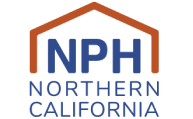What steps are involved in creating Affordable Housing?
Are there benefits to Affordable Housing?
October 29, 2013Newsletter Archive
November 19, 2013
The local community sets the framework for needs, available funding and the city’s housing policies set the framework in which any housing proposal will be considered.
- a. Housing Needs Assessment
As part of ensuring the continued vitality of its community, each locality regularly reviews whether people of all income levels can meet their housing needs in its jurisdiction. - b. Land Use and Requirements
Each city establishes its own General Plan, zoning ordinances, planning codes, housing policies, requirements and standards. These policies anticipate expected community concerns about any new developments, and set guidelines for appearance, traffic, noise, parking, the size and density of a building, and the materials used in construction. - c. Available Funding
Each city establishes a budget of funds available to assist in the development of housing in its jurisdiction. Federal and state financing sources include: low income housing tax credits, bank loans, U.S. Department of Housing and Urban Development (HUD) grants and loans (e.g. Housing Opportunities for Persons with AIDS or “HOPWA”), HOME Investment Partnership funds, Affordable Housing Program (AHP) and Community Development Block Grant (CDBG) funds. In some cities, local programs provide other funds, for example, redevelopment fund set-asides, in-lieu fees from developers of market rate projects or local housing trust funds or bonds.
The community and a developer partner in a building concept, potential financing and finding available land.
- a. Process
Often, local government invites proposals from experienced developers to meet an identified need. Sometimes, a local community-based developer assembles a project with the local government. In most cases, the developer will perform some early design work, financial feasibility calculations, and other analysis to make sure the concept is sound before publicizing the idea broadly.
- b. Concept
Dependent upon the community’s identified need, the concept must address many issues: the resident population to be served, including their income level; the special services to be offered (if any); restrictions of available funding sources; characteristics of available land, and other factors. The community also considers the track record and special expertise of the developer involved.
- c. Financing
In the last decade, affordable housing developers have assembled complex funding packages to make developments financially feasible, combining federal, state, local government funds and private funds with the project’s anticipated rental revenues. Typically, local government funds leverage larger federal and state contributions. Most communities require the developers to pay for infrastructure and impact fees (e.g. for local schools) to serve their projects.
Homeownership developments require significantly deeper public subsidies and, considering the numbers of people assisted, homeownership is a less efficient use of available subsidies. This is the reason most affordable housing developments are rental units.
- d. Land
Suitable sites may be identified (and sometimes owned) by the local government, identified by a real estate broker, donated by its owner for this purpose, or found by other means.
Local government, property owners, community groups and concerned individuals review, revise, and approve the proposal.
-
a. Review
The local government reviews the proposal to ensure that it meets the city’s requirements and policies. When local government funds are involved, a regulatory agreement is often used to make sure that the development is managed and operated according to the community’s standards. The law requires local governments to ensure that both developers and potential residents are not subject to discrimination. In general, this requires that local government limit public scrutiny to the proposed building and its potential land use impacts, rather than considering who will be living in the building. In the case of housing for persons with disabilities, the local government must also make “a reasonable accommodation” (e.g. make an exception to its setback requirement) to enable these housing opportunities to be realized.
-
b. Revision
Concerned individuals, local property owners, and community groups often participate in public review processes as well as in direct meetings with affordable housing developers. Often, revisions will be made to respond to valid concerns, improve the proposal and satisfy all legal requirements.
-
c. Approval
Once a proposal is approved and financing is secured, the developer proceeds with construction or rehabilitation. During construction, tenant selection begins. Tenants are carefully screened and selected before they move in. Property maintenance and tenant management are ongoing.

